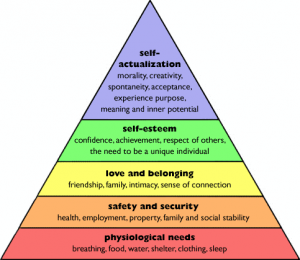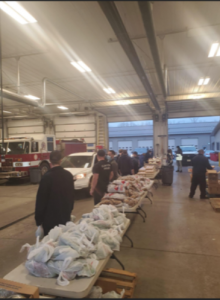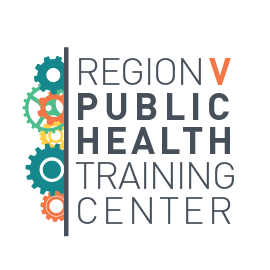This post comes from the RVPHTC’s partners at Franklin County Public Health in Ohio.
By Jenny Creutzinger, MPH, Community Health Action Team (CHAT) Coordinator
Cover Image Source: Canva
In recent years, there has been a transition in public health that acknowledges health as a complete state of being, rather than an evaluation of one’s physical body.
The World Health Organization defines health as, “a state of complete physical, mental, and emotional well-being, and not merely the absence of disease and infirmity.” While this definition does the important work of including meaningful parts of wellness such as mental and emotional wellbeing, it leaves out access to basic needs.
American psychologist Abraham Maslow theorized that humans had a hierarchy of needs to not only survive but to be wholly fulfilled. The most basic of human needs were physiological: access to food, water and shelter. Without those things, one cannot make it to the top tier “self-actualization”, much less the “safety” or “belonging” categories.

Image Source: American Society for Public Administration
But what does food have to do with mental, as well as physical health?
As public health officials, the answer is obvious: healthy food does wonders for the body. It prevents heart disease, diabetes and a myriad of illnesses that are the leading causes of death in America. It promotes active living and increased life expectancy.
Some people, however, don’t have the luxury of thinking “What foods should I eat in order to lengthen my life and fight off chronic disease?” Organic, fresh, and healthy are not a necessity for the food insecure, but a privilege. So what does fast and easy access to food do for people who are struggling to feed themselves and their families right now?
Simply put, it eases their mind.
An initiative of the Community Health Action Teams (CHATS) in Franklin County, Ohio are free, fresh produce markets that are held three times a month. This gives Franklin County residents the opportunity three weeks out of the month to come out to their local firehouses and receive varied fresh produce.
In March of 2022, more than 1,000 individuals received close to 30,000 pounds of groceries to feed themselves and their families.
People of all ages, cultural identities and backgrounds pull up in their cars to receive potatoes, apples, collard greens, onions, pineapples and the occasional baked good. And while the produce market fulfills their physiological aspect of survival, it allows them to take a break from worrying about their next meal and focus on Maslow’s other categories such as love, safety and belonging.
When physiological needs such as food are provided for, mental health can finally take the front seat, allowing an individual to be truly “healthy.”
In a world that prioritizes physical health above mental health, it is time for us as public health professionals to promote the reality that these two parts of health aren’t separate, but synonymous.

Image source: Clinton Township Fresh Produce Market
Interested in learning more? Check out these trainings from the RVPHTC:
- How Health Clinicians Can Address Food Insecurity
- Collective Impact for Cross-Sector Collaboration: Food Systems

